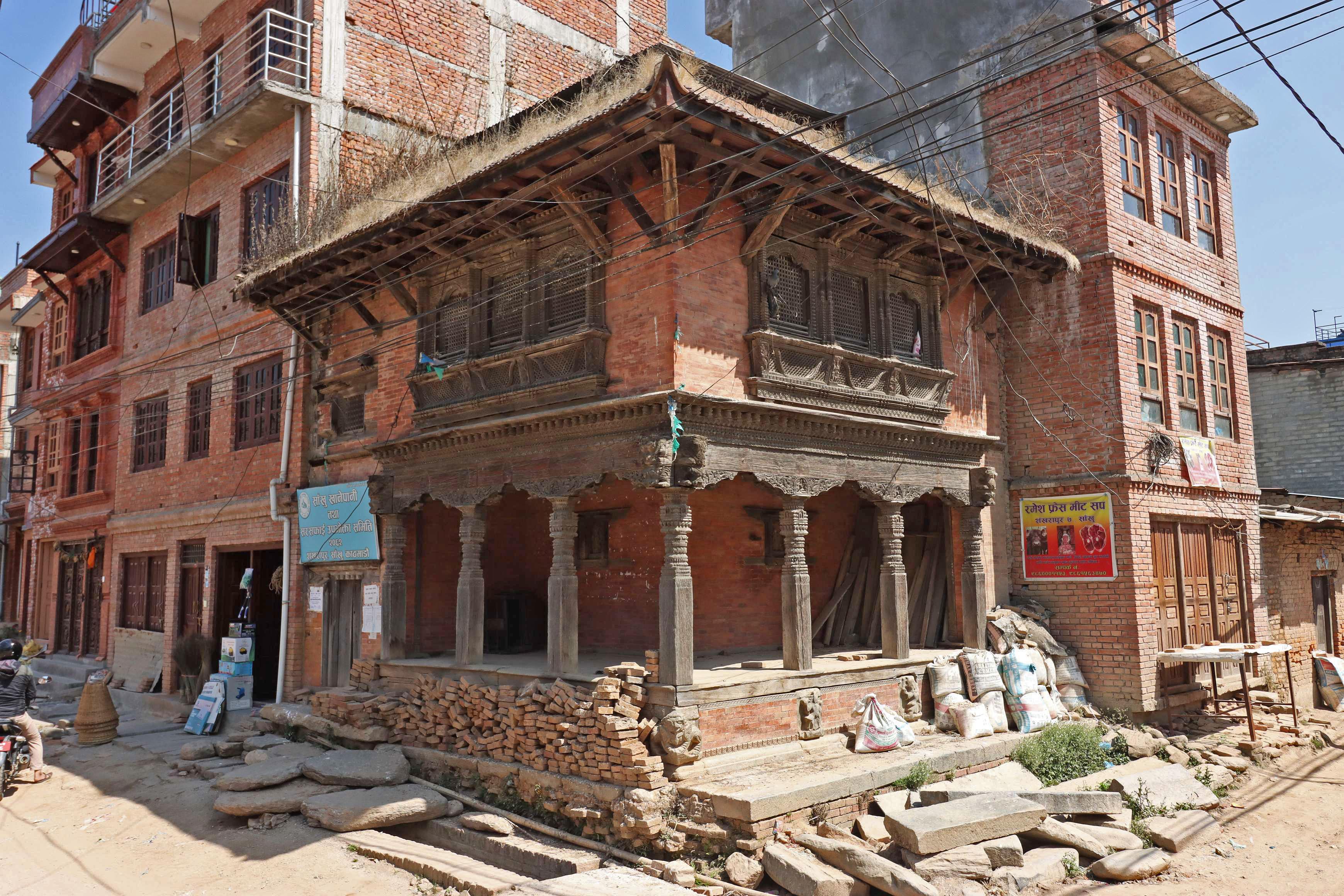Sarāvata Sataḥ, Sankhu

Serving as a place for distributing alms or food (sadāvarta) to ascetics, Sarāvata Sataḥ (still retains its original wooden components from 1617 CE (NS 836). Constructed in the ‘L’ shape, the two-storey Sataḥ contains an intricately-carved sãjhyāḥ (bay window) on both façades. The columns and capitals also contain fine carvings. The board placed between a column and capital (cvakulāṃ) are of rare octagonal design here. An inscription at the Sataḥ records that the founders of the Sataḥ (Harikṛṣṇa, Jayasaṃkara, Ratnasiṃha, Jayalatna, and Saṃkaradeva) endowed some thirty ropanīs of land upon its construction to sponsor a regular alms distribution to ascetics and mendicants on the new moon and full moon days continued up until the 2015 earthquakes. However, this tradition is no longer practiced at the Sataḥ (as of March 2022).
For more information about Sarāvata Sataḥ, please visit DANAM.
